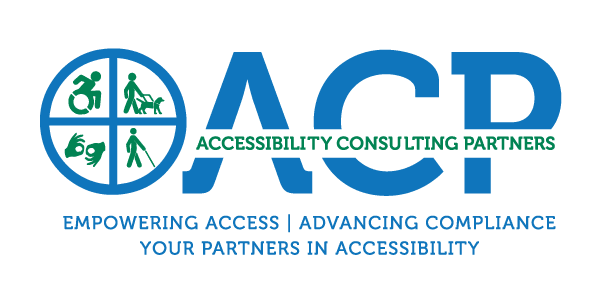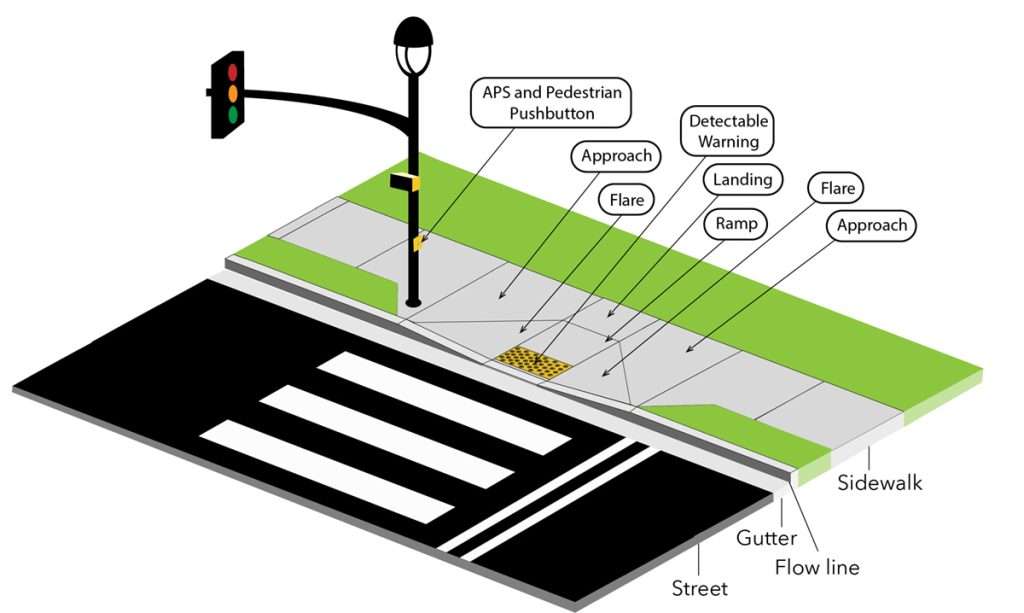Section § 35.105 Self Evaluation of the Americans with Disabilities Act Title II Regulations requires, “A public entity shall, within one year of the effective date of this part, evaluate its current services, policies, and practices, and the effects thereof, that do not or may not meet the requirements of this part and, to the extent modification of any such services, policies, and practices is required, the public entity shall proceed to make the necessary modifications.”
While complying with the law is a big part of why cities, counties, and towns should conduct a thorough Self-evaluation and Transition Plan (SETP), it isn’t the only reason. There are numerous reasons why providing a SETP and acting on remediating the barriers identified during the process can be beneficial, including:
Improved Physical Accessibility
One of the primary benefits of conducting an SETP is the significant improvement in accessibility that an SETP can provide when municipalities remediate barriers identified during the process or relocate programs, services, and activities to accessible facilities. By addressing these barriers, municipalities can ensure that all residents, regardless of their abilities, have equal access to public programs, services, and activities. This includes everything from accessible sidewalks and public transportation to inclusive recreational programs and public buildings with compliant entries and access to all floors within multi-floor facilities. Improved accessibility not only benefits people with disabilities but also enhances the overall usability of public spaces for everyone, including the elderly, parents with strollers, and individuals with temporary impairments.
Community Inclusion
By making public spaces and services accessible, municipalities can ensure that people with disabilities can participate fully in civic life. This includes attending public meetings, participating in recreational activities, and accessing essential services such as healthcare and education. Enhanced community inclusion leads to a more diverse community where everyone has the opportunity to contribute and thrive. It also helps to break down social barriers and promote understanding.
Better Public Services
Evaluating and improving accessibility often leads to better overall service delivery. Implementing accessible technology, such as websites and assistive listening systems, can enhance the user experience for all residents, including those who are deaf, hard of hearing, blind, or have low vision. Better public services contribute to higher satisfaction among residents and can attract new businesses and visitors to the area.
Bolster Public Reputation
Demonstrating a commitment to accessibility can significantly enhance the reputation of a city, town, or county. When municipalities take proactive steps to ensure that all residents can access public services and facilities, it sends a message that they are dedicated to creating an inclusive community. This positive public image can attract potential residents, businesses, and tourists.
Increased Economic Benefits
By making public spaces and services accessible, municipalities can attract more visitors and residents, including those with disabilities and their families. This increased tourism can boost local businesses and contribute to the area’s overall economic growth. Additionally, accessible infrastructure, such as sidewalks and curb ramps, can support the development of new businesses and industries, creating job opportunities for individuals with disabilities and stimulating the local economy.
Increased Staff Awareness
Conducting an SETP often involves training staff on the requirements of the ADA, including etiquette training. This increased awareness can lead to a more informed public service and equip staff members with the tools necessary to ensure they are not discriminatory toward individuals with disabilities. Staff members who are knowledgeable about accessibility issues are better equipped to assist residents with disabilities and ensure that their needs are met.
Legal Compliance
Finally, as mentioned above, ensuring legal compliance with the ADA. The ADA requires that public entities not discriminate against individuals with disabilities and must provide equal access to all their programs, services, and activities. By conducting a SETP, municipalities can identify areas where barriers to accessibility may exist and take corrective actions to remove those barriers. This proactive approach helps mitigate the risk of DOJ settlement agreements and private lawsuits arising from non-compliance.


